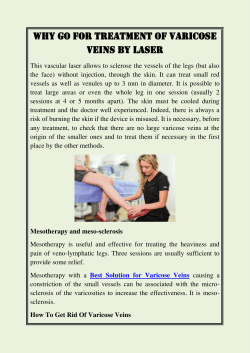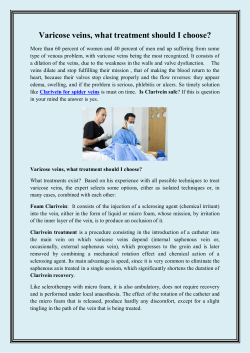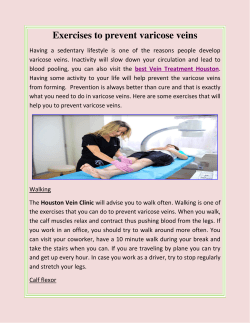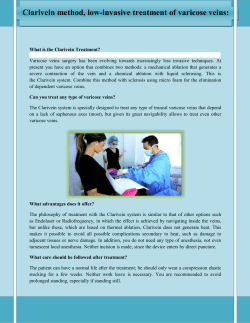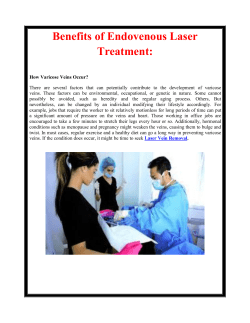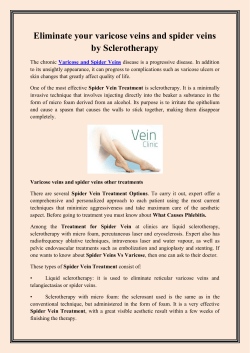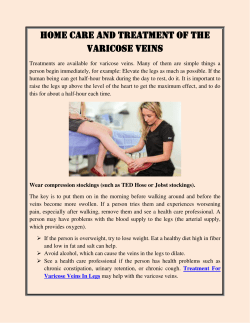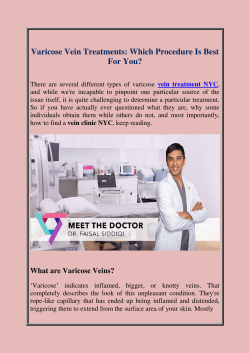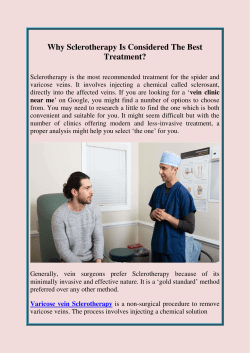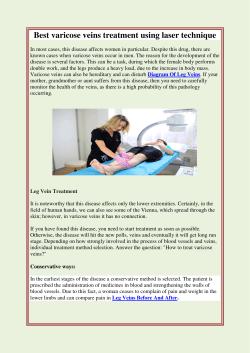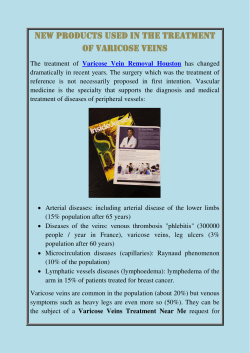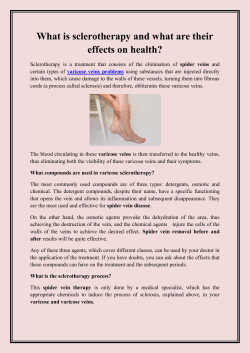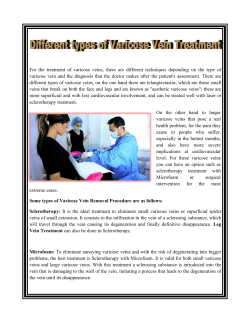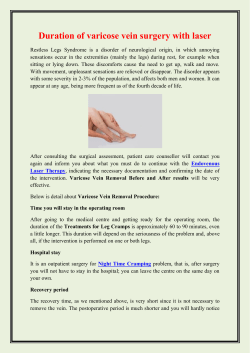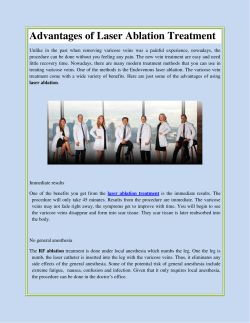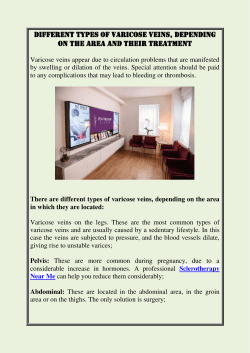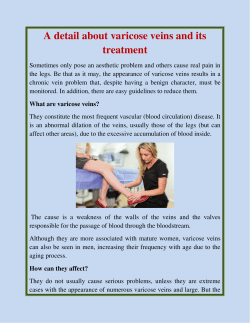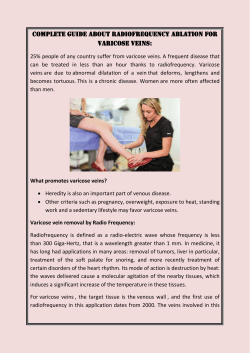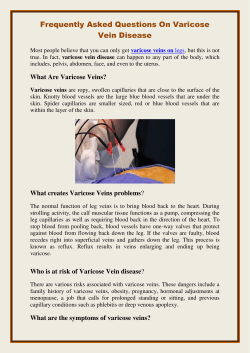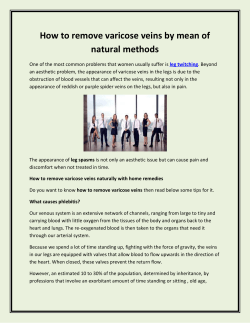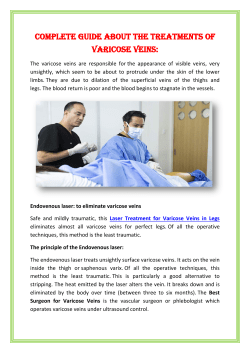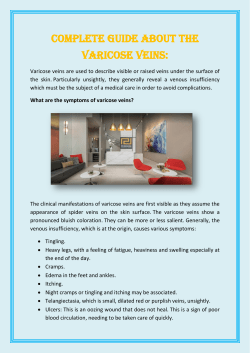
Pathophysiology of Varicose Disease
Pathophysiology of Varicose Disease Varicose disease is a more or less extensive dilation of the superficial venous network of the lower limbs, almost always with a tortuous disposition and with a permanent alteration of the vascular wall, accompanied or not by valvular insufficiency. Vein disease in legs occurs in 1 in 4 adult women, and 1 in 10 adult men. There is a direct genetic predisposition in most patients and there are factors that determine the time of onset, among which are: pregnancy, use of contraceptives, hydro saline retention, orthotatism. Most Common Symptoms The clinical manifestations vary from one patient to another as the appearance of varicose dilatations can vary from small varicosities called telangiectasias, reticular varicose veins (green lines under the skin), or large tortuous varicose trunks. In turn, the colour varies depending on the type of skin and the amount of blood in the glass. Regarding the symptomatology in a first period it is scarce generating only aesthetic discomfort, then in a second stage it begins to feel heaviness, fatigue especially at the end of the day, accompanied by pain of localization in ankles, calves. The cramps and leg heaviness are also very frequent especially at night in the twin area. It may also appear pruritus on the ankles and back of the foot and finally edema (swelling) that represents the failure of the regulation of fluid drainage. The third stage is constituted by the permanence of the aforementioned disorders and there is coetaneous hyper pigmentation (dark skin called ochre or stasis dermatitis), hardening of the skin, intense pruritus, and sporadic reddening due to chronic inflammation (eczema). In the fourth stage, the skin ulcer (difficult to treat and very slow to disappear), sometimes impossible to close, which is very susceptible to recurrent infections and if it takes the entire circumference of the leg occurs limb gangrene affected, this being the end of an uncontrolled disease. So it is must to consult veins specialist doctor in case of above symptoms. How are they treated? Telangiectasias are treated with sclerotherapy and laser, venectasias and reticular varices can be treated with sclerotherapy and microsurgery, and veins more dilated with surgery or endovascular laser. Best spider vein doctor can suggest you more about it. What is sclerotherapy? It is a treatment by best varicose vein doctor that involves the placement of a substance inside the vessels with which the occlusion of the same occurs and then with the passage of time the body reabsorbs it. What is the micro foam? Micro foam is the foam that is made with a sclerosing substance for the treatment of varicose veins. It is converted into foam to cover a larger amount of surface with the minimum amount of drug possible. What is the laser treatment? It is an intense light that is used to sclerosar varicose veins of small caliber called Trans dermal laser, or large caliber (endovascular laser). Laser treatment is among the leading-edge treatments worldwide at laser vein removal centers. What symptoms do they produce? From the clinical point of view and according to the diameter and depth of the dilated vessels, varicose veins can be classified into: spider veins, venectasias, reticular varicose veins and varicose veins that deform the skin forming gulfs dilated. Patients usually present with pain, heaviness, cramps and swelling of the legs, symptoms that constitute chronic venous insufficiency. There are different causes of venous insufficiency which varies from person to person.
© Copyright 2026
